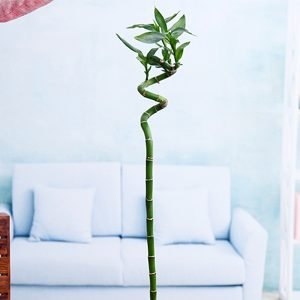All Plants, Herb Plants, Indoor Plants
Krishna Tulsi Plant, Holy Basil, Ocimum tenuiflorum (Black) – Plant
Availability:
999 in stock
₹147.00 ₹250.00
999 in stock
-
All Plants, Herb Plants, Indoor Plants, Outdoor Plants
Rama Tulsi Plant, Basil, Ocimum sanctum (Green)- Plant
-49% All Plants, Herb Plants, Indoor Plants, Outdoor Plants
All Plants, Herb Plants, Indoor Plants, Outdoor PlantsRama Tulsi Plant, Basil, Ocimum sanctum (Green)- Plant
1) Name of plant – Rama Tulsi / Ocimum sanctum
2) Type of plant (Indoor/ Outdoor) – Outdoor
3) Size of the pot it comes in- 4 inches
4) Seasonal / Perennial – Perennial
5) Flowering/ Foliage- Foliage
6) Place to keep- Bright Light
SKU: n/a
₹476.00 for 3 item(s)
THIS PLANT COMES WITH BASIC BLACK POT
Plant Specifications
| Common Name | Krishna, Shyama Tulsi |
| Maximum Reachable Height | Up to 60 centimeters. |
| Flower Colour | Purple. |
| Bloom Time | year-round. |
| Difficulty Level | Easy to grow. |
Planting And Care
Sunlight
- Keep the plant outdoor in natural bright light.
- Protect the plant from direct harsh sunlight as it can cause damage to the foliage.
Soil
- The soil should be well drained and fertile rich in oragnic content.
Watering
- Poke your finger/plain small stick into the soil to check the moisture.
- Water when top soil (1-2 inches) feels dry to touch.
- Water thoroughly in the summer and reduce watering in winter and rainy season.
Application of Fertilizer
- During the main growing season feed the plant with organic fertilizer once a month.
- Loosen the topsoil without disturbing the roots of the plant so it can uptake the nutrients and moisture easily.
Re-potting
- When a plant outgrows in current pot, re-pot with fresh potting soil and some fertilizer.
- Do the re-potting late evening and keep the plant in shady area for 2 to 3 days and then move the plant in its suitable climatic condition.
Plant Protection
- Remove dead, infected or damaged plant parts and dispose them away from the planting area.
- Spray Neem, Eucalyptus or Citrus oil for any insect/pest attack, as a primary treatment.
Don’ts
- Easily grows in AC rooms but away from AC vents.
- Do not over-water the plant especially when pot does not have drainage holes.
Krishna Tulsi Plant Care
Initial care for 1-2 weeks after receiving plant at your location:
- Keep the plant in natural indirect bright Light.
- Poke your finger/plain small stick into the soil to check the moisture.
- Water when top soil (1-2 inches) feels dry to touch.
- Do not re-pot for min. 2 weeks after receiving it.
Key requirements to keep plant healthy:
| Sunlight | Natural bright light. |
| Watering | Poke your finger/plain small stick into the soil to check the moisture. Water when topsoil (1-2 inches) feels dry to touch. Water thoroughly in the summer and reduce watering in winter and rainy season. |
| Soil | Soil should be well drain and fertile, rich in organic content. |
| Temperature | Up to 35-degree Celcius. |
| Fertilizer | Apply any organic fertilizer. |
| Harvest Season | The first harvest is done after 90 days of planting and subsequently, it may be harvested every 75 days interval. |
Krishna Tulsi Plant Uses
Medicinal Use:
- Krishna Tulsi is used in treating low energy, ulcers, vomiting and diarrhea or as an overall tonic
- The powder of the dried Krishna Tulsi root, taken in milk, ghee or as a decoction, is recommended to treat malarial fever as an analgesic application to the bites and string of insects
- The herb improves resistance to stress and has a normalizing influence on blood pressure and blood sugar imbalances
- Tulsi is likely to prove prophylactic against the negative effects of environmental toxins, including cancer
- The plant is also richly endowed with bioavailable antioxidants, vitamins A and C and calcium
- It has marked insecticidal activity against mosquitoes
- Tulsi leaves contain a bright yellow volatile oil which is useful against insects and bacterial
- The principal constituents of this oil are eugenol, eugenol methyl ether and carvacrol
- The oil is reported to possess antibacterial properties and acts as an insecticide
- Note: The following information is general guidelines, be sure to ask your healthcare provider for guidelines
Culinary Use:
- Krishna tulsi fresh leaves Add to salads, fruit dishes, jellies, preserves and sweetbreads
- Krishna tulsi uses in Thai cooking in stir-fries with hot peppers, chicken, pork and beef
- The dried leaves are an ingredient of Ethiopian spice mixtures
Disclaimer : The image is for reference purposes only. The actual product may vary in shape or appearance based on climate, age, height, etc.
Based on 1 review
Add a review
You must be logged in to post a review.













355singhhemant –
Plant received on time and in healthy condition. There was no damage on the plant.
355singhhemant –